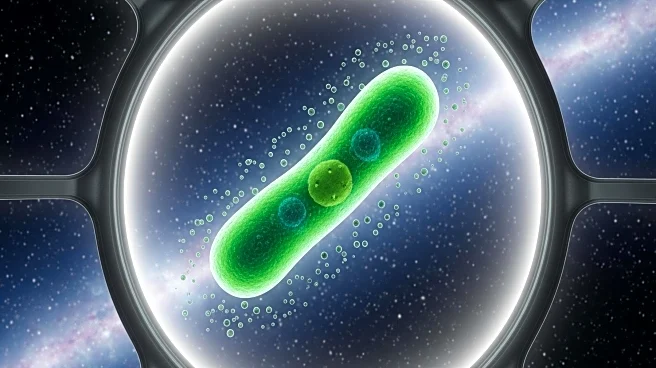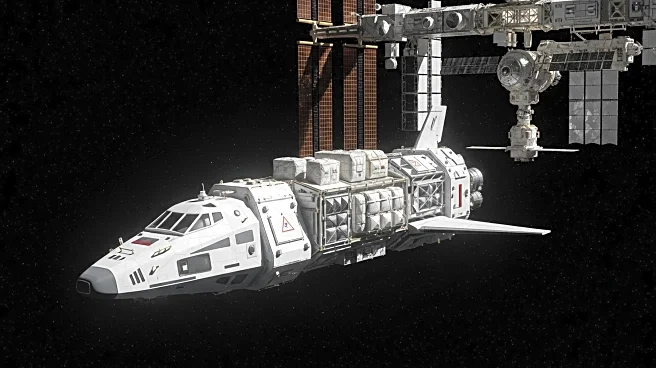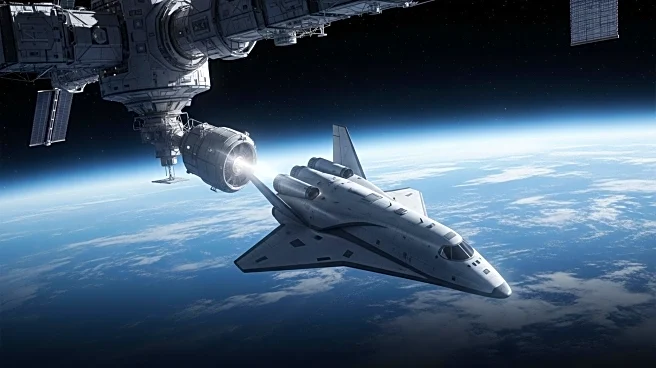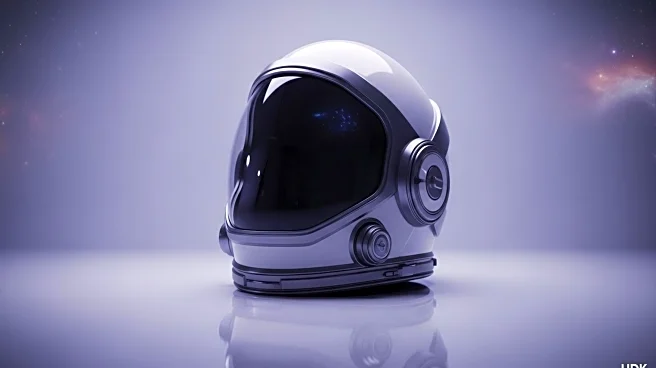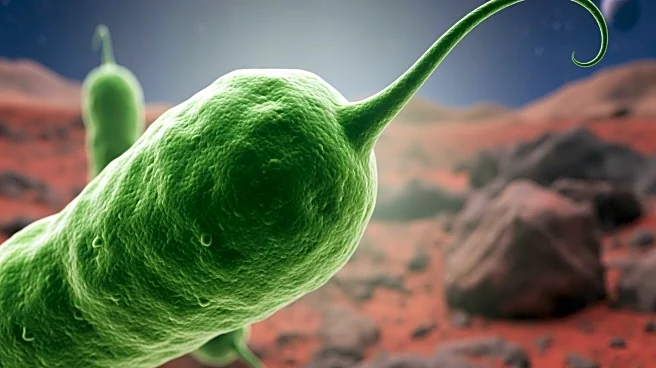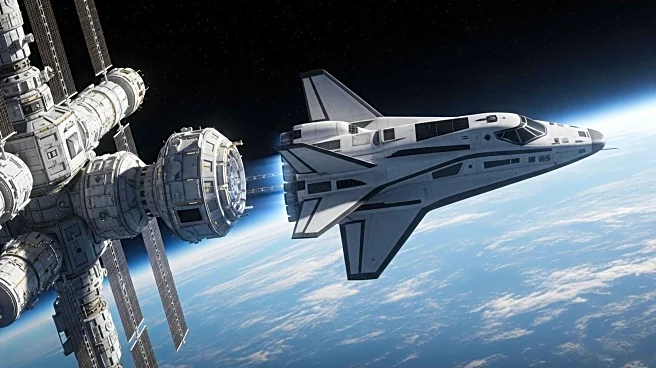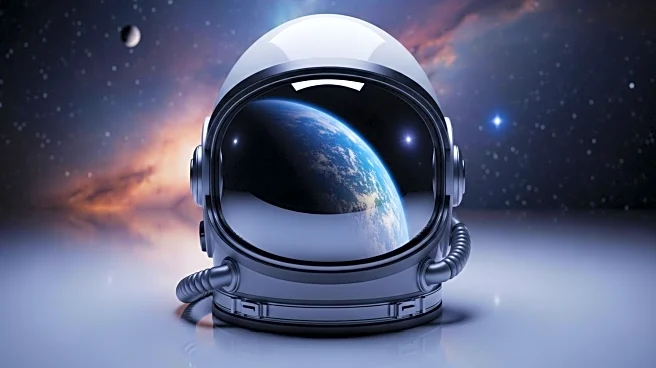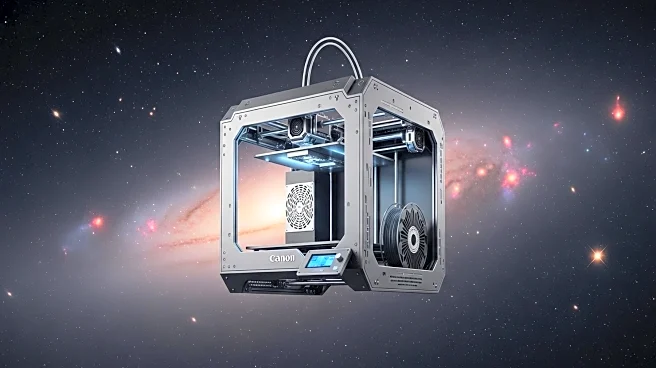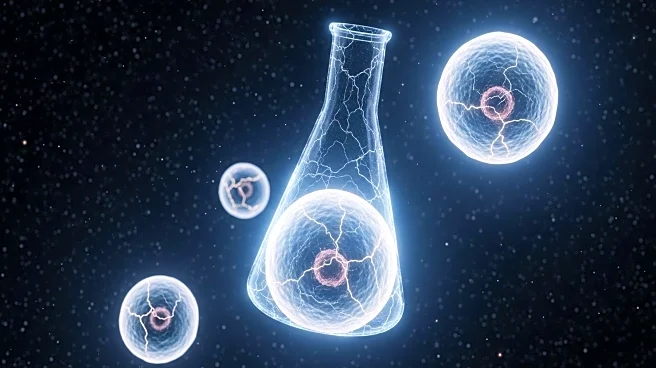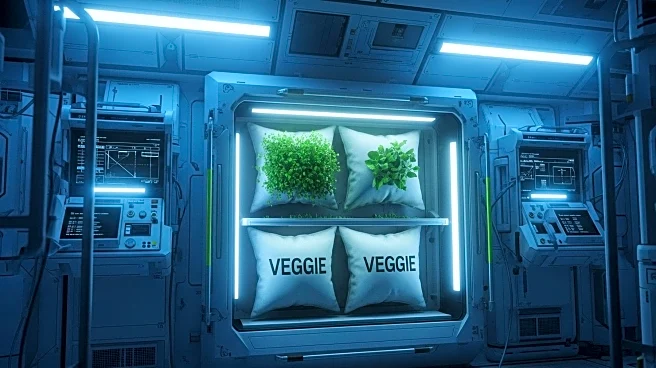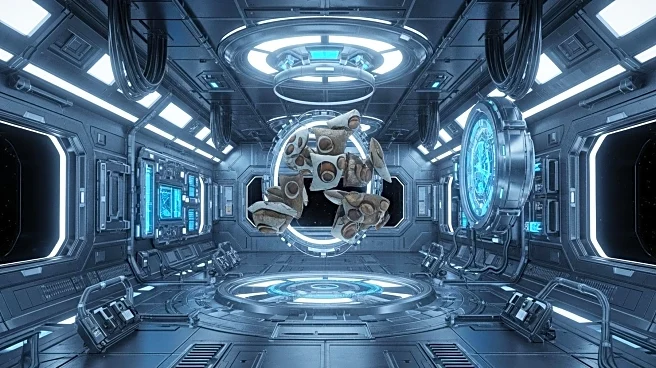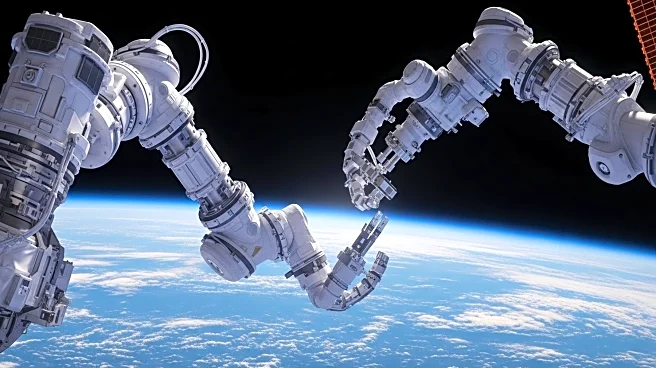What is the story about?
What's Happening?
Chroococcidiopsis, a cyanobacterium known for its resilience in extreme environments, is being studied for its potential applications in space exploration. Experiments conducted on the International Space Station have demonstrated its ability to survive harsh conditions, including UV radiation and gamma radiation. The bacterium can also produce oxygen from Martian soil, making it a candidate for supporting life on other planets. Future missions aim to explore its DNA repair processes in microgravity and its ability to use far-infrared light for photosynthesis, which could inform our understanding of life around M-dwarf stars.
Why It's Important?
The ability of Chroococcidiopsis to survive and thrive in extreme conditions makes it a valuable tool for astrobiology research. Its potential to produce oxygen from Martian soil could be pivotal for future space missions, providing a sustainable source of oxygen for astronauts. Understanding its DNA repair mechanisms and photosynthetic capabilities could lead to breakthroughs in biotechnology and space exploration, offering insights into how life might adapt to extraterrestrial environments. This research could also contribute to the development of life-support systems for long-term space missions.
What's Next?
Several upcoming missions will focus on further understanding the capabilities of Chroococcidiopsis. The CyanoTechRider mission will study the effects of microgravity on its DNA repair processes, while the BIOSIGN mission will investigate its use of far-infrared light for photosynthesis. These studies could expand our knowledge of extremophiles and their applications in space exploration, potentially leading to new technologies for sustaining life in space. The findings may also have implications for understanding life in environments with high infrared radiation, such as those around M-dwarf stars.
AI Generated Content
Do you find this article useful?
